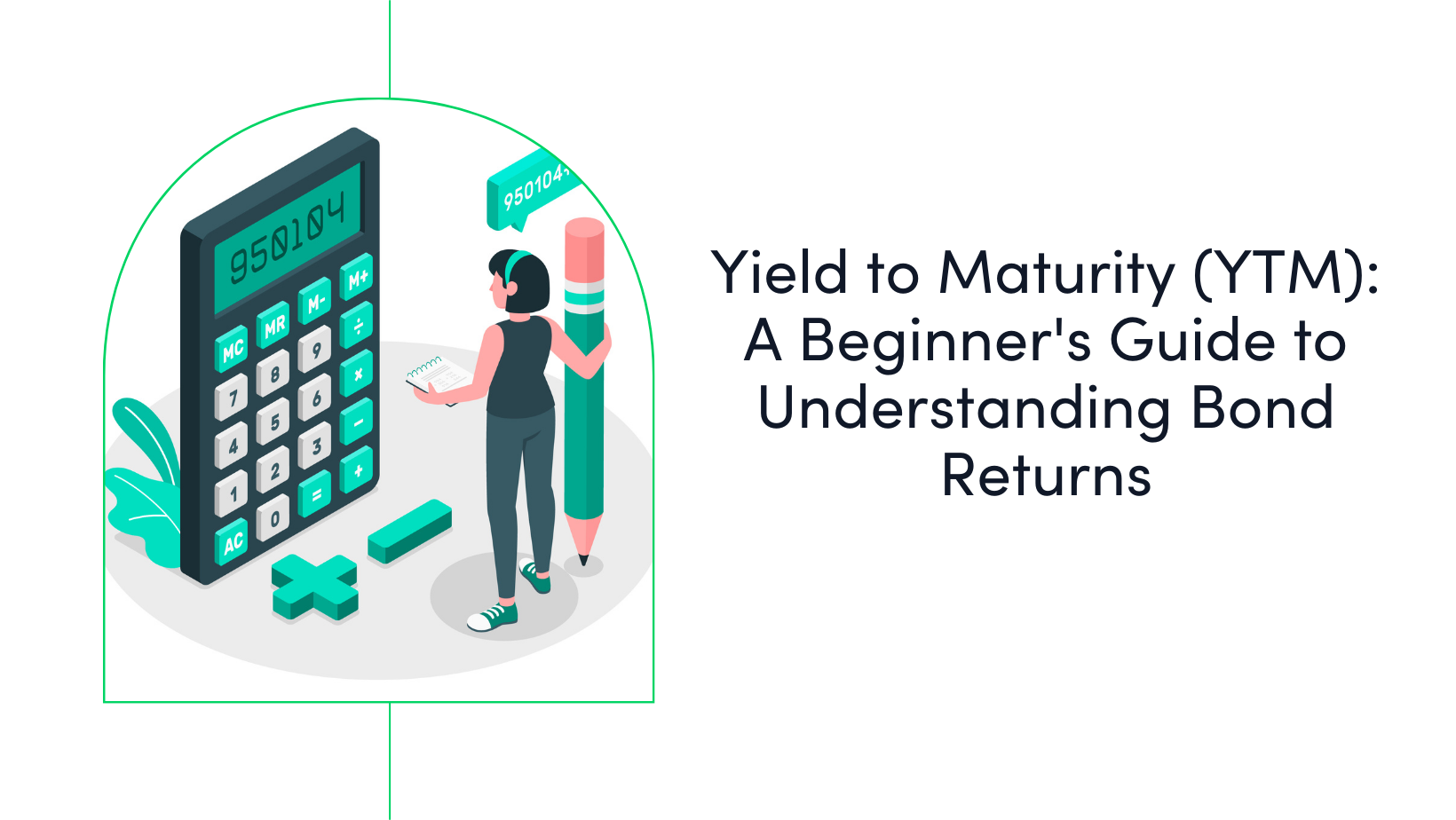Earn 9%–15% on Senior Secured Bonds.
Lower risk. Fixed returns. Start investing on Aspero with just ₹10,000.
Explore Bonds


Capital Gain Bonds in India: How to Save Taxes While Investing
We often look for ways to reduce the taxes we pay on the profits from our investments, particularly capital gains. Investing in capital gain bonds is one way to save taxes, these are financial instruments that give you a steady income on your investments in addition to helping you save taxes. In this article, we will discuss capital gain bonds in India, including their advantages and disadvantages.
Understanding Capital Gain Bonds
Capital Gain Bonds, also known as 54EC Bonds, are special financial securities that provide tax breaks on long-term capital gains. These bonds were introduced under Section 54EC of the Income Tax Act of 1961.
Individuals who invest in these bonds can save on taxes that would otherwise be imposed on earnings from the sale of long-term capital assets such as real estate, gold, or other investments. The principal issuers of these bonds are government-backed institutions such as the National Highway Authority of India (NHAI) and the Rural Electrification Corporation (REC), resulting in a low-risk investment environment.
The capital gain bond market in India is modest in comparison to other financial markets, but it is critical for individuals looking to defer or reduce capital gains tax penalties. These bonds provide a unique opportunity for investors to align their tax-saving tactics with their investment objectives.
How Do Capital Gain Bonds Work?
Capital Gain Bonds operate in a straightforward manner. When a person sells a long-term asset, they incur a capital gain that is taxed under the Income Tax Act. However, by investing the sale proceeds in Capital Gain Bonds within six months, the individual can claim an exemption from the tax on these profits. This exemption is only available for long-term capital gains, therefore these bonds are especially advantageous for people dealing with large investments in real estate or other high-value assets.
The bonds have a set lock-in period of five years, which was increased from three years by the Union Budget 2019. During this period, the investor is unable to redeem or sell the bonds. The interest rate on these bonds is now around 5.25%, offering a consistent but modest return on investment. While the returns may appear lower when compared to other high-risk investing options, the tax-saving benefit frequently makes Capital Gain Bonds an appealing option.
Tax Exemption Under Section 54EC
Section 54EC of the Income Tax Act is critical to understanding the tax-saving potential of Capital Gain Bonds. This clause permits taxpayers to claim a long-term capital gains exemption if they invest the earnings in particular bonds within six months of selling the asset. The maximum investment in these bonds is ₹50 lakhs each fiscal year. If an investor’s capital gains surpass ₹50 lakhs, they can still invest in these bonds in two different financial years, as long as the sale and investment occur within the specified time frame.
The tax exemption requires that the investment be held for the whole five-year lock-in period. If the bonds are sold or transferred before this time, the tax exemption is revoked, and the capital gains are taxable in the year of sale. Furthermore, the bonds are not marketable on the secondary market and cannot be used as collateral for loans, stressing their importance as a long-term investment.
Benefits of Investing in Capital Gain Bonds
- Tax Savings: The main advantage of Capital Gain Bonds is the tax exemption under Section 54EC. Taxpayers can save a large amount of money by investing in these bonds instead of paying long-term capital gains taxes.
- Low-Risk Investment: Because these bonds are issued by government-backed entities such as NHAI and REC, they pose no risk. Investors can be confident that their principal will be safe while getting a fixed return.
- Stable Returns: Capital Gain Bonds have lower interest rates than other investment options, but they are solid and predictable. The current rate of 5.25% provides a regular income stream, making it ideal for conservative investors.
- No Tax on Interest Earned: The interest on these bonds is completely taxed. However, because the investment is primarily intended to save taxes on capital gains, the interest tax is sometimes regarded as a minor disadvantage when contrasted to the overall tax savings.
Comparison with Other Investment Options
When selecting an investment method, it is critical to weigh the possible profits against the risks involved. Capital Gain Bonds have a unique benefit in terms of tax savings, but how do they compare to other investing options?
Let’s consider an example to illustrate this comparison:
Assume Ms. Y invests ₹50,000 in Capital Gain Bonds with a 5.25% interest rate over five years. Ms. Z, on the other hand, puts the same amount in an alternate investment choice with a 10% return but no tax benefits. After five years, Ms. Y would have gained ₹13,12,500 from her investment, totalling ₹63,12,500. Ms. Z earns ₹25,00,000 but pays ₹13,12,500 in capital gains tax, resulting in a total of ₹61,87,500.
As demonstrated, the tax-saving benefits of Capital Gain Bonds can result in a larger net return than higher-yield, taxable assets. As a result, for individuals that prioritise tax savings, these bonds may be a more profitable option, despite their lower interest rates.
Types of Bonds in India
India provides a range of bonds, each with unique characteristics and benefits. While Capital Gain Bonds are primarily created for tax savings, other bonds may fulfil different investment needs.
- Government Bonds: These bonds are issued by the Central Government and are considered highly secure, with a low but guaranteed return. They are perfect for risk-averse investors that want stability.
- Municipal Bonds: Issued by state governments or municipal businesses, these bonds provide a low-risk investment with guaranteed returns, albeit at a lower interest rate than corporate bonds.
- Public Sector Bonds: These bonds, issued by government-owned firms, are relatively safe and yield moderate yields. They are ideal for investors seeking a balance of risk and reward.
- Corporate Bonds: These are issued by private corporations and provide higher returns than government bonds. However, they pose a larger risk, making them appropriate for investors with a higher risk tolerance.
Among these, Capital Gain Bonds stand out for their specific use case – tax exemption. While other bonds might offer higher returns, Capital Gain Bonds provide a unique advantage by allowing investors to save on taxes.
How to Invest in Capital Gain Bonds
Investing in Capital Gain Bonds is a simple process, but it takes attention to detail. These bonds are not traded on the stock exchange and must be purchased directly from the issuing institution, either in physical or Demat form.
Here’s a step-by-step guide:
- Download the Application Form: The bond application form can be downloaded from the official websites of NHAI, REC, IRFC, or PFC.
- Fill Out the Form: Fill out the form completely, making sure all of the information is correct.
- Submit the Form: Submit the completed form, along with the required documentation and a check or demand draft, to the indicated bank branches.
- NEFT/RTGS Transfer: Alternatively, you can transfer the investment amount directly to the collection account using NEFT/RTGS and include the UTR number in the application form.
- Receive the Bonds: After processing, the bonds will be issued in physical form or credited to your Demat account.
Challenges and Limitations of Capital Gain Bonds
While Capital Gain Bonds offer good tax benefits, they are not without drawbacks:
- Lower Interest Rates: The interest rates provided by these bonds is lower in comparison to other investing options. However, these bonds may not be as attractive to investors looking for higher returns.
- Lock-In Period: The five-year lock-in term limits liquidity, making these bonds unsuitable for investors who require access to their cash sooner.
- Taxable Interest: As good as exempt tax treatment sounds, the increase in interest adds to the taxable amount.
- Specific Use Case: These bonds are targeted at people who are looking to save tax on long-term capital gains. But they are likely not your best overall wealth-building bet.
Conclusion
In India, Capital Gain Bonds are a strategic investment instrument for people wishing to save taxes on long-term capital gains. They provide a secure and effective means to handle big revenues from asset sales, thanks to their government backing, consistent returns, and tax exemption benefits. However, due to the lower interest rates and lock-in duration, they are best suited for investors that choose tax savings over significant returns.
Before investing, contact a financial professional to confirm that Capital Gain Bonds fit into your overall financial strategy. By doing so, you can make an informed selection that maximises both your tax savings and your investment portfolio.
FAQs
- What are Capital Gain Bonds, and how do they help save taxes?
Capital Gain Bonds, also known as Section 54EC bonds, are financial securities that offer tax breaks for long-term capital gains. You can avoid paying capital gains tax by investing the proceeds from the sale of long-term capital assets, such as real estate or stocks, in these bonds within six months.
- Who is eligible to invest in Capital Gain Bonds?
Capital Gain Bonds can be invested in by both residents and non-residents, Hindu Undivided Families (HUFs), and certain trusts. These bonds are specifically intended to assist taxpayers who have realised capital gains and wish to save on taxes.
- What is the lock-in period for Capital Gain Bonds, and what happens if they are redeemed early?
Capital gain bonds feature a five-year lock-in period. If redeemed or sold before the end of this time, the initial tax exemption is forfeited, and the gains are taxed as long-term capital gains in the year of redemption.
- How much can I invest in Capital Gain Bonds, and what is the interest rate?
The maximum investment in Capital Gain Bonds is Rs. 50 lakh each fiscal year. The interest rate normally runs between 5-6% every year. Though the returns are small, the main benefit is the tax break on long-term capital gains.
To keep up with updates in the world of personal finance, check out Aspero’s fixed income academy.










